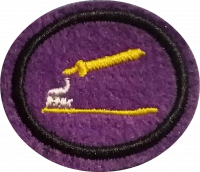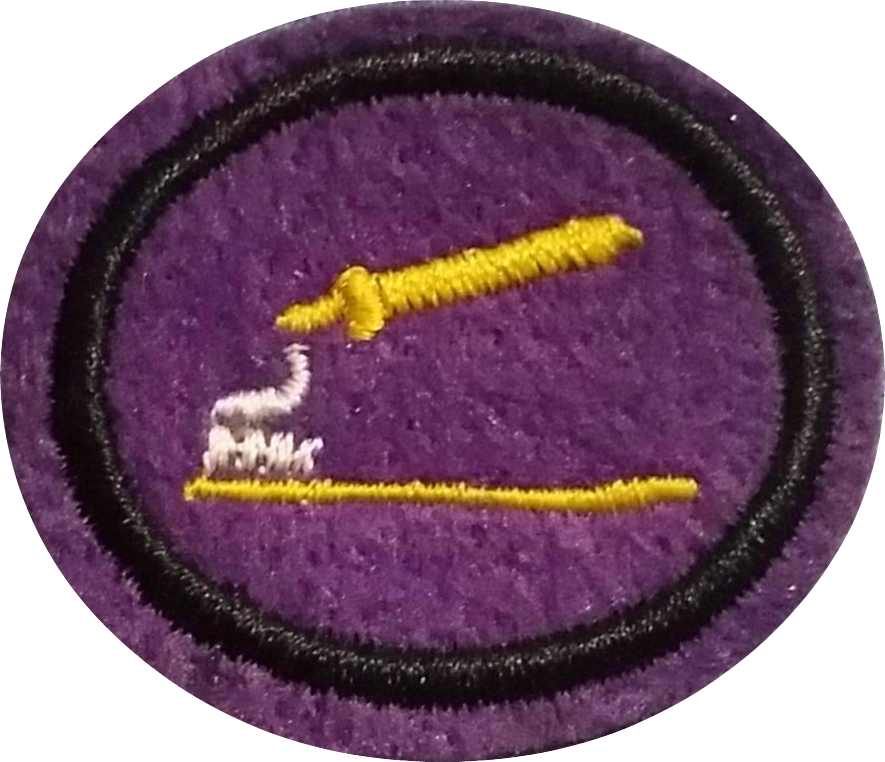Difference between revisions of "AY Honors/Oral Hygiene/Answer Key/es"
From Pathfinder Wiki
< AY Honors | Oral HygieneAY Honors/Oral Hygiene/Answer Key/es
(Created page with "</noinclude> {{honor_desc |stage=00 |honorname=Higiene oral |skill=1 |year=2012 |category=Salud y ciencia |authority=División Sudamericana |insignia=Oral Hygiene Honor.png |i...") |
|||
| (20 intermediate revisions by 2 users not shown) | |||
| Line 1: | Line 1: | ||
| − | + | {{HonorSubpage}} | |
| − | |||
| − | {{ | ||
| − | |||
| − | |||
| − | |||
| − | |||
| − | |||
| − | |||
| − | |||
| − | |||
| − | }} | ||
| − | |||
| − | |||
| − | |||
<section begin="Body" /> | <section begin="Body" /> | ||
{{ansreq|page={{#titleparts:{{PAGENAME}}|2|1}}|num=1}} | {{ansreq|page={{#titleparts:{{PAGENAME}}|2|1}}|num=1}} | ||
<noinclude></noinclude> | <noinclude></noinclude> | ||
| − | <!-- 1. | + | <!-- 1. Definir higiene oral. --> |
| − | |||
<noinclude></noinclude> | <noinclude></noinclude> | ||
| Line 24: | Line 9: | ||
{{ansreq|page={{#titleparts:{{PAGENAME}}|2|1}}|num=2}} | {{ansreq|page={{#titleparts:{{PAGENAME}}|2|1}}|num=2}} | ||
<noinclude></noinclude> | <noinclude></noinclude> | ||
| − | <!-- 2. | + | <!-- 2. ¿Por cuántas denticiones pasa un ser humano? --> |
| − | + | {{clear}} | |
| − | + | {{clear}} | |
| − | |||
| − | |||
| − | |||
| − | + | {{clear}} | |
<noinclude></noinclude> | <noinclude></noinclude> | ||
| Line 39: | Line 21: | ||
{{ansreq|page={{#titleparts:{{PAGENAME}}|2|1}}|num=3}} | {{ansreq|page={{#titleparts:{{PAGENAME}}|2|1}}|num=3}} | ||
<noinclude></noinclude> | <noinclude></noinclude> | ||
| − | <!-- 3. | + | <!-- 3. ¿Para qué sirven los dientes de leche? --> |
| − | |||
<noinclude></noinclude> | <noinclude></noinclude> | ||
| Line 46: | Line 27: | ||
{{ansreq|page={{#titleparts:{{PAGENAME}}|2|1}}|num=4}} | {{ansreq|page={{#titleparts:{{PAGENAME}}|2|1}}|num=4}} | ||
<noinclude></noinclude> | <noinclude></noinclude> | ||
| − | <!-- 4. | + | <!-- 4. ¿Cuáles son las clases de dientes? Describir las funciones de cada clase. --> |
<noinclude></noinclude> | <noinclude></noinclude> | ||
| Line 52: | Line 33: | ||
{{ansreq|page={{#titleparts:{{PAGENAME}}|2|1}}|num=5}} | {{ansreq|page={{#titleparts:{{PAGENAME}}|2|1}}|num=5}} | ||
<noinclude></noinclude> | <noinclude></noinclude> | ||
| − | <!-- 5. | + | <!-- 5. ¿A partir de qué edad se debe iniciar la higiene bucal? ¿Cómo? ¿Por qué? --> |
<noinclude></noinclude> | <noinclude></noinclude> | ||
| Line 58: | Line 39: | ||
{{ansreq|page={{#titleparts:{{PAGENAME}}|2|1}}|num=6}} | {{ansreq|page={{#titleparts:{{PAGENAME}}|2|1}}|num=6}} | ||
<noinclude></noinclude> | <noinclude></noinclude> | ||
| − | <!-- 6. | + | <!-- 6. ¿Cuáles son los alimentos recomendables para una dentición saludable? --> |
<noinclude></noinclude> | <noinclude></noinclude> | ||
| Line 64: | Line 45: | ||
{{ansreq|page={{#titleparts:{{PAGENAME}}|2|1}}|num=7}} | {{ansreq|page={{#titleparts:{{PAGENAME}}|2|1}}|num=7}} | ||
<noinclude></noinclude> | <noinclude></noinclude> | ||
| − | <!-- 7. | + | <!-- 7. ¿Qué daños puede traer el mal cepillado? --> |
<noinclude></noinclude> | <noinclude></noinclude> | ||
| − | {{CloseReq}} | + | {{CloseReq}} |
{{ansreq|page={{#titleparts:{{PAGENAME}}|2|1}}|num=8}} | {{ansreq|page={{#titleparts:{{PAGENAME}}|2|1}}|num=8}} | ||
<noinclude></noinclude> | <noinclude></noinclude> | ||
| − | <!-- 8. | + | <!-- 8. ¿Cuáles son los medios para usar fluoruro? ¿De qué formas se encuentra? --> |
<noinclude></noinclude> | <noinclude></noinclude> | ||
| − | {{CloseReq}} <!-- | + | {{CloseReq}} <!-- 7 --> |
{{ansreq|page={{#titleparts:{{PAGENAME}}|2|1}}|num=9}} | {{ansreq|page={{#titleparts:{{PAGENAME}}|2|1}}|num=9}} | ||
<noinclude></noinclude> | <noinclude></noinclude> | ||
| − | <!-- 9. | + | <!-- 9. ¿Qué es un revelador? --> |
<noinclude></noinclude> | <noinclude></noinclude> | ||
| − | {{CloseReq}} <!-- | + | {{CloseReq}} <!-- 8 --> |
{{ansreq|page={{#titleparts:{{PAGENAME}}|2|1}}|num=10}} | {{ansreq|page={{#titleparts:{{PAGENAME}}|2|1}}|num=10}} | ||
<noinclude></noinclude> | <noinclude></noinclude> | ||
| − | <!-- 10. | + | <!-- 10. ¿Qué debe ser usado para hacer una higiene bucal completa? --> |
<noinclude></noinclude> | <noinclude></noinclude> | ||
| − | {{ansreq|page={{#titleparts:{{PAGENAME}}|2|1}}|num= | + | {{CloseReq}} <!-- 9 --> |
| + | {{ansreq|page={{#titleparts:{{PAGENAME}}|2|1}}|num=11}} | ||
<noinclude></noinclude> | <noinclude></noinclude> | ||
| + | <!-- 11. Demostrar la forma correcta de: --> | ||
<noinclude></noinclude> | <noinclude></noinclude> | ||
| − | + | {{ansreq|page={{#titleparts:{{PAGENAME}}|2|1}}|num=11a}} <!--T:12--> | |
| − | {{ansreq|page={{#titleparts:{{PAGENAME}}|2|1}}|num= | ||
<noinclude></noinclude> | <noinclude></noinclude> | ||
<noinclude></noinclude> | <noinclude></noinclude> | ||
| − | {{CloseReq}} <!-- | + | {{CloseReq}} <!-- 11a --> |
| − | {{ansreq|page={{#titleparts:{{PAGENAME}}|2|1}}|num= | + | {{ansreq|page={{#titleparts:{{PAGENAME}}|2|1}}|num=11b}} <!--T:13--> |
<noinclude></noinclude> | <noinclude></noinclude> | ||
<noinclude></noinclude> | <noinclude></noinclude> | ||
| − | {{CloseReq}} <!-- | + | {{CloseReq}} <!-- 11b --> |
| − | + | {{ansreq|page={{#titleparts:{{PAGENAME}}|2|1}}|num=11c}} <!--T:14--> | |
| − | {{ansreq|page={{#titleparts:{{PAGENAME}}|2|1}}|num= | ||
<noinclude></noinclude> | <noinclude></noinclude> | ||
| − | |||
<noinclude></noinclude> | <noinclude></noinclude> | ||
| + | {{CloseReq}} <!-- 11c --> | ||
{{CloseReq}} <!-- 11 --> | {{CloseReq}} <!-- 11 --> | ||
{{ansreq|page={{#titleparts:{{PAGENAME}}|2|1}}|num=12}} | {{ansreq|page={{#titleparts:{{PAGENAME}}|2|1}}|num=12}} | ||
<noinclude></noinclude> | <noinclude></noinclude> | ||
| − | <!-- 12. | + | <!-- 12. ¿Por qué debemos usar dentífrico fluorizado? --> |
| + | |||
| + | <noinclude></noinclude> | ||
| + | {{CloseReq}} <!-- 11 --> | ||
| + | {{ansreq|page={{#titleparts:{{PAGENAME}}|2|1}}|num=13}} | ||
| + | <noinclude></noinclude> | ||
| + | <!-- 13. ¿Cómo se forman la caries? --> | ||
<noinclude></noinclude> | <noinclude></noinclude> | ||
{{CloseReq}} <!-- 12 --> | {{CloseReq}} <!-- 12 --> | ||
<noinclude></noinclude> | <noinclude></noinclude> | ||
| − | == | + | ==Referencias== |
| − | |||
<noinclude></noinclude> | <noinclude></noinclude> | ||
| − | + | {{CloseHonorPage}} | |
Latest revision as of 00:52, 26 July 2022
Higiene oral
Nivel de destreza
1
Año
2012
Version
31.12.2025
Autoridad de aprobación
División Sudamericana
1
Definir higiene oral.
2
¿Por cuántas denticiones pasa un ser humano?
3
¿Para qué sirven los dientes de leche?
4
¿Cuáles son las clases de dientes? Describir las funciones de cada clase.
5
¿A partir de qué edad se debe iniciar la higiene bucal? ¿Cómo? ¿Por qué?
6
¿Cuáles son los alimentos recomendables para una dentición saludable?
7
¿Qué daños puede traer el mal cepillado?
8
¿Cuáles son los medios para usar fluoruro? ¿De qué formas se encuentra?
9
¿Qué es un revelador?
10
¿Qué debe ser usado para hacer una higiene bucal completa?
11
Demostrar la forma correcta de:
11a
Aplicar revelador a los dientes
11b
Hacer el cepillado
11c
Usar hilo dental
12
¿Por qué debemos usar dentífrico fluorizado?
13
¿Cómo se forman la caries?



